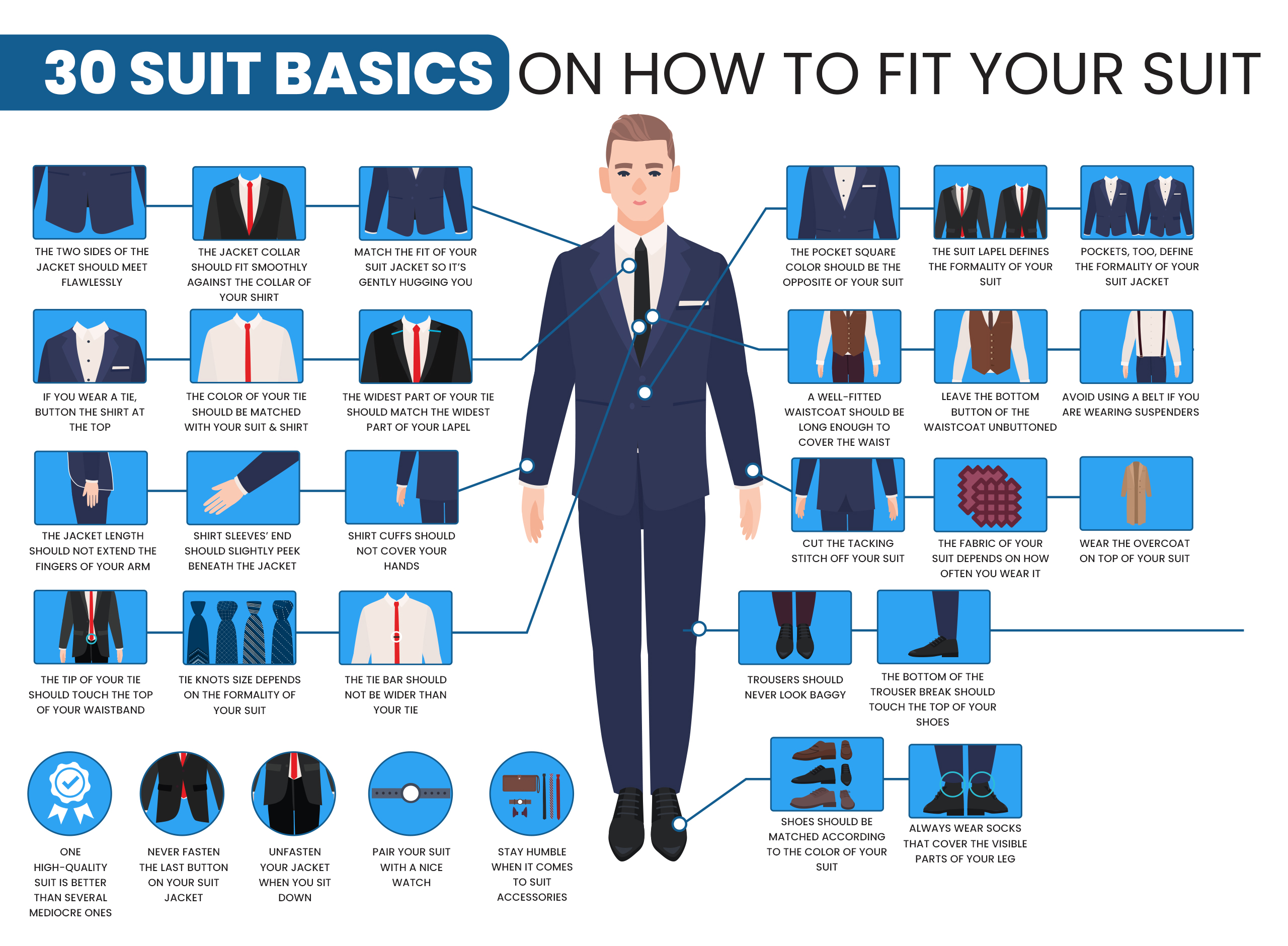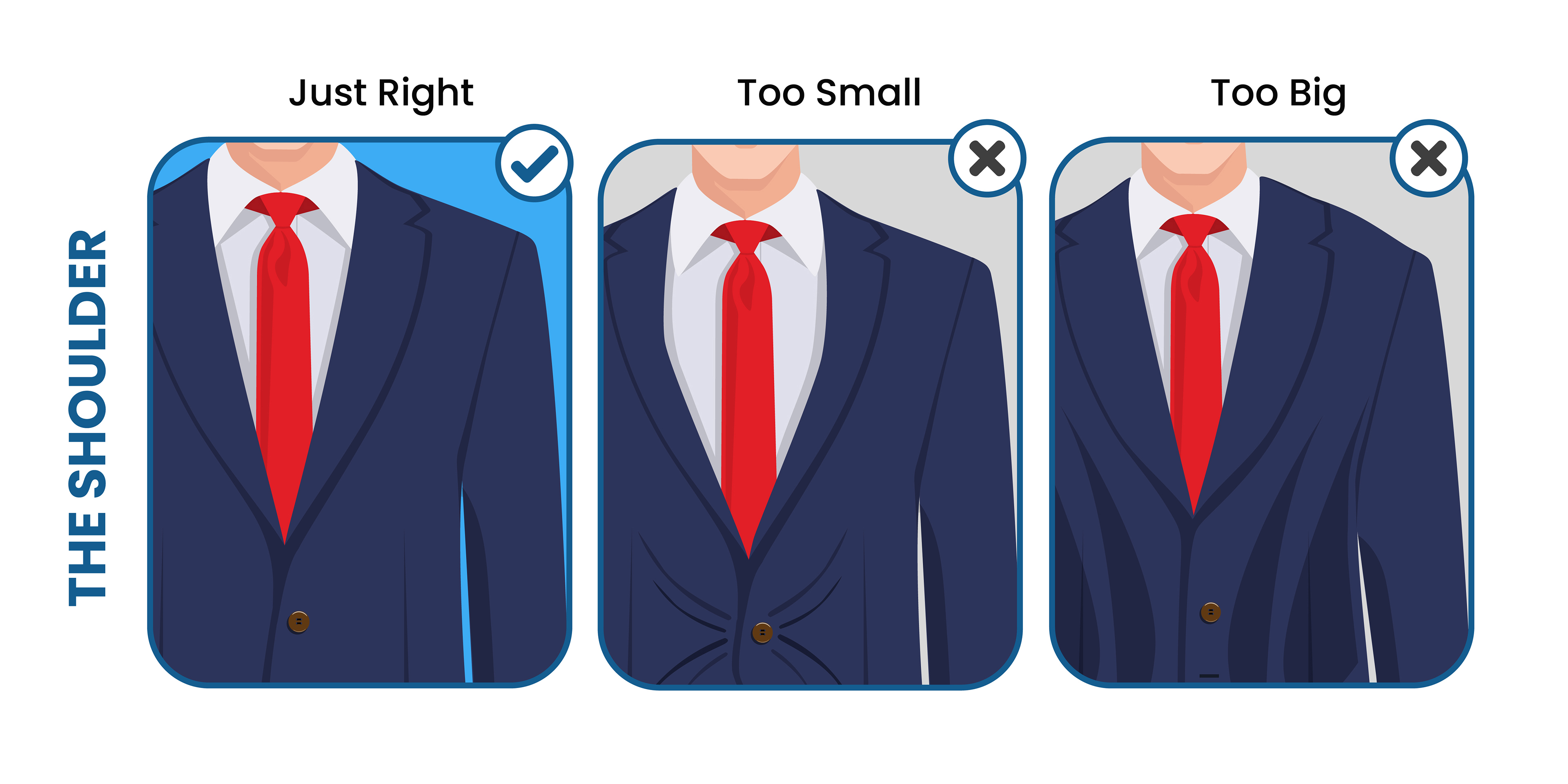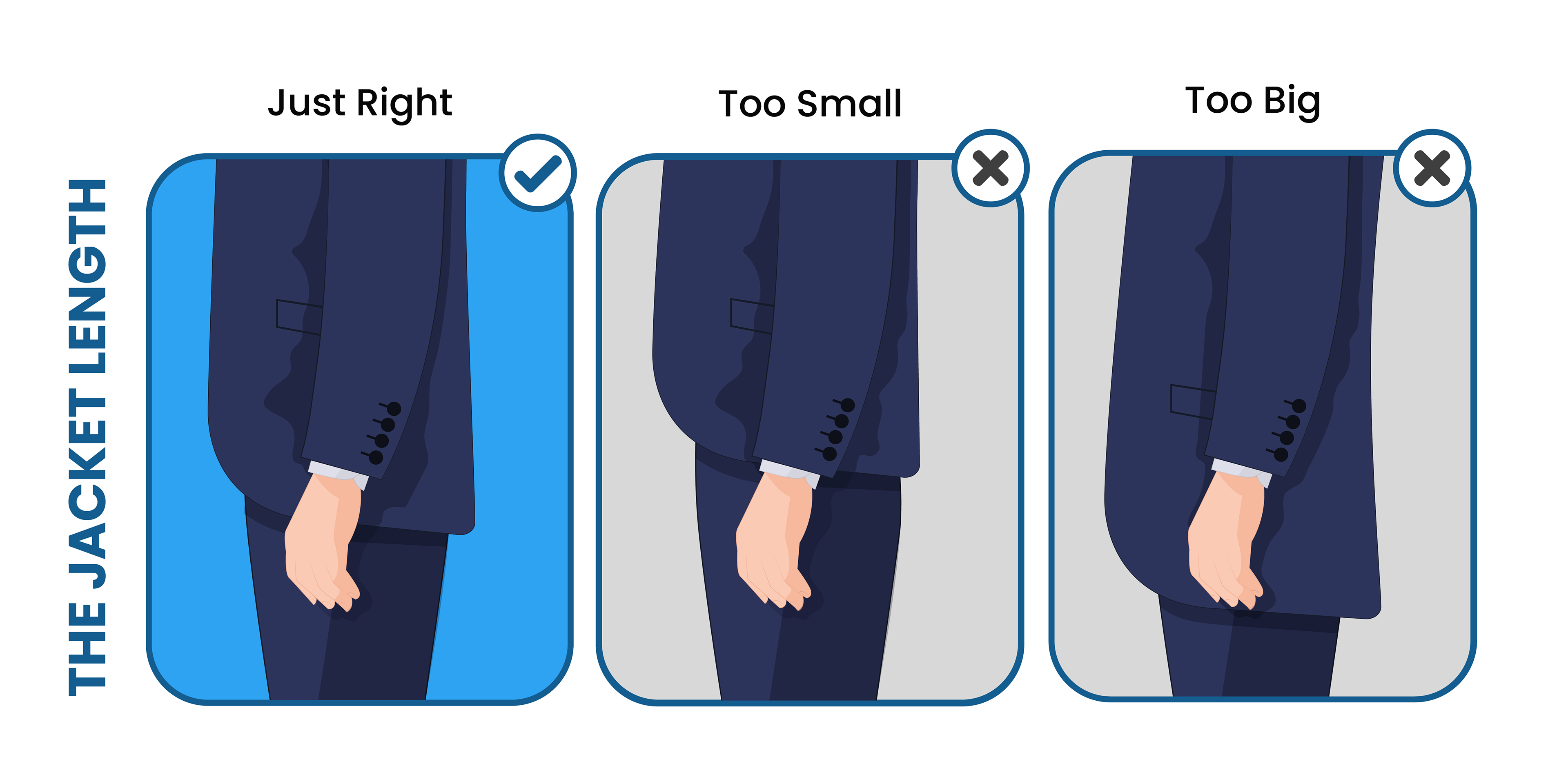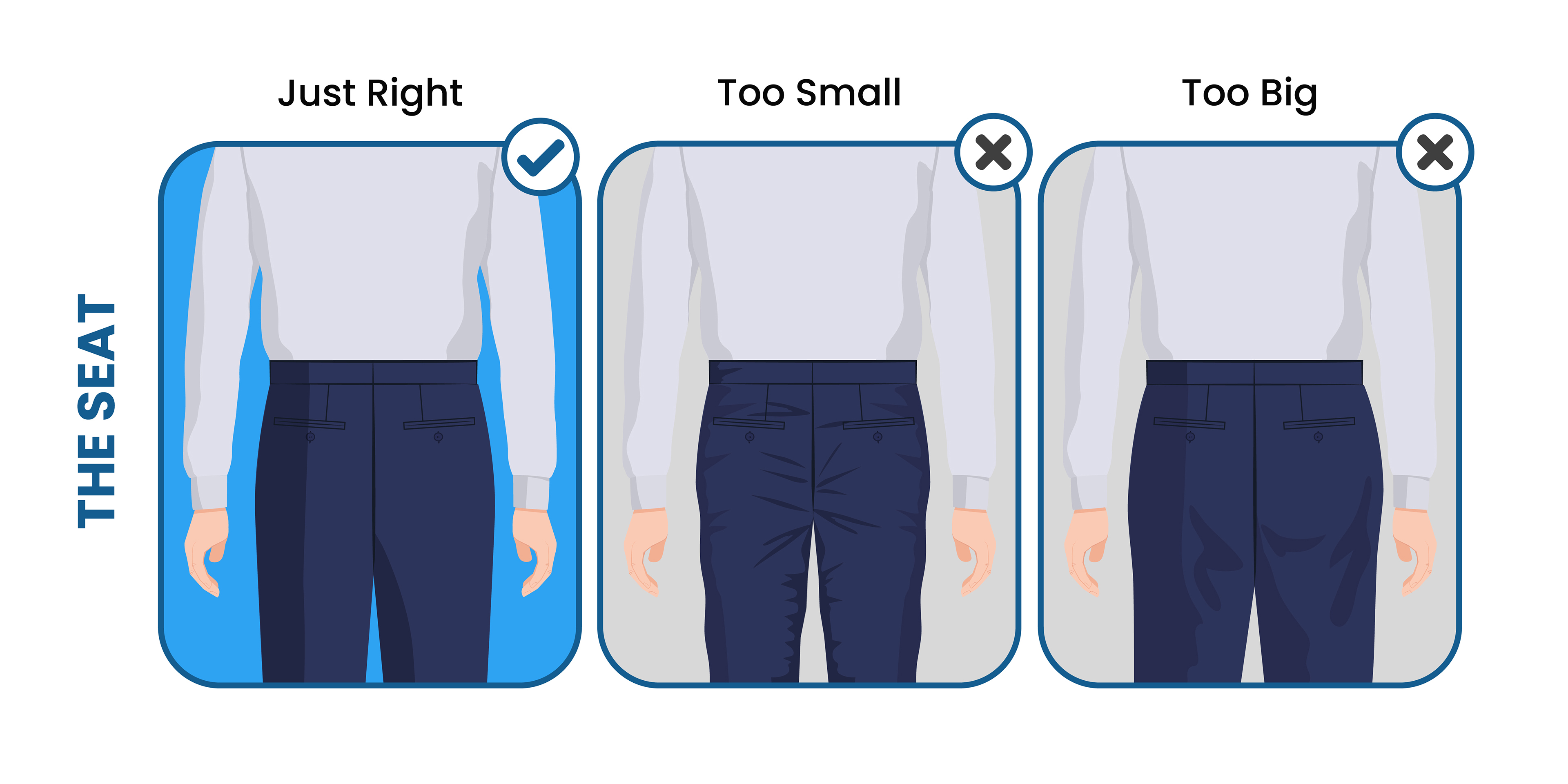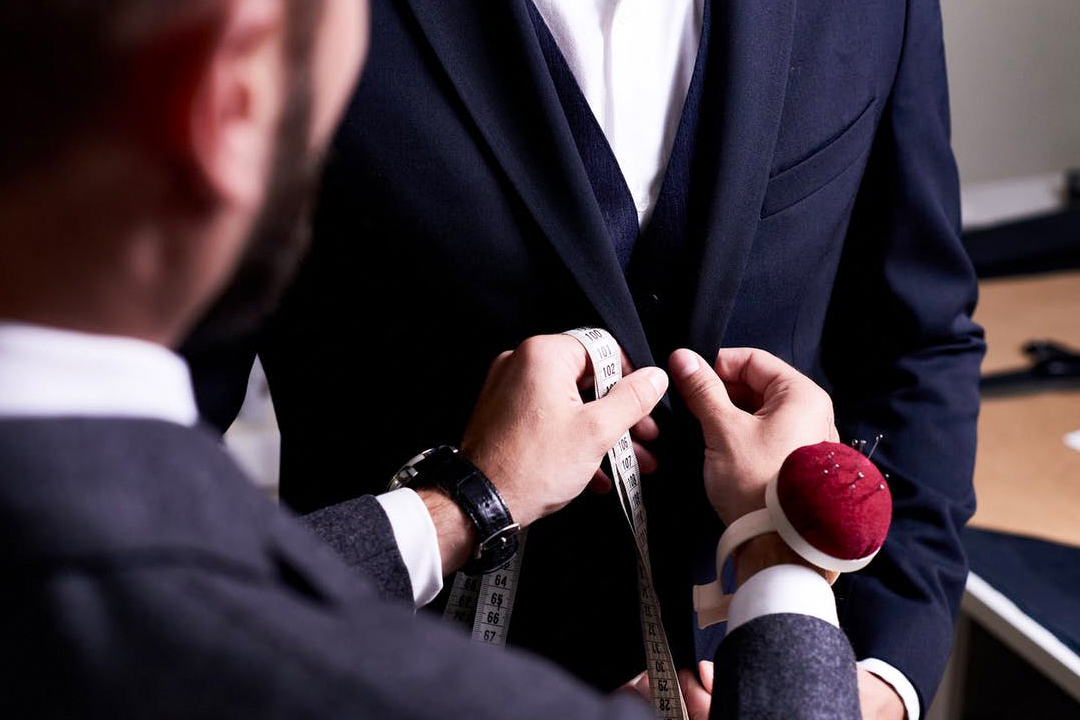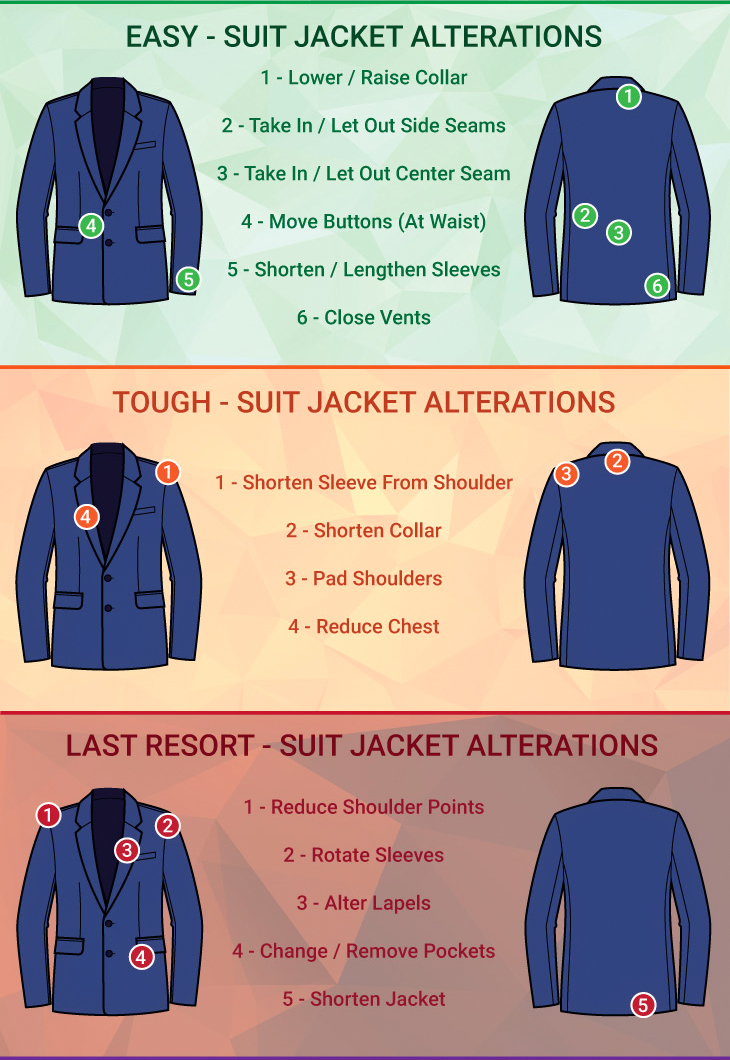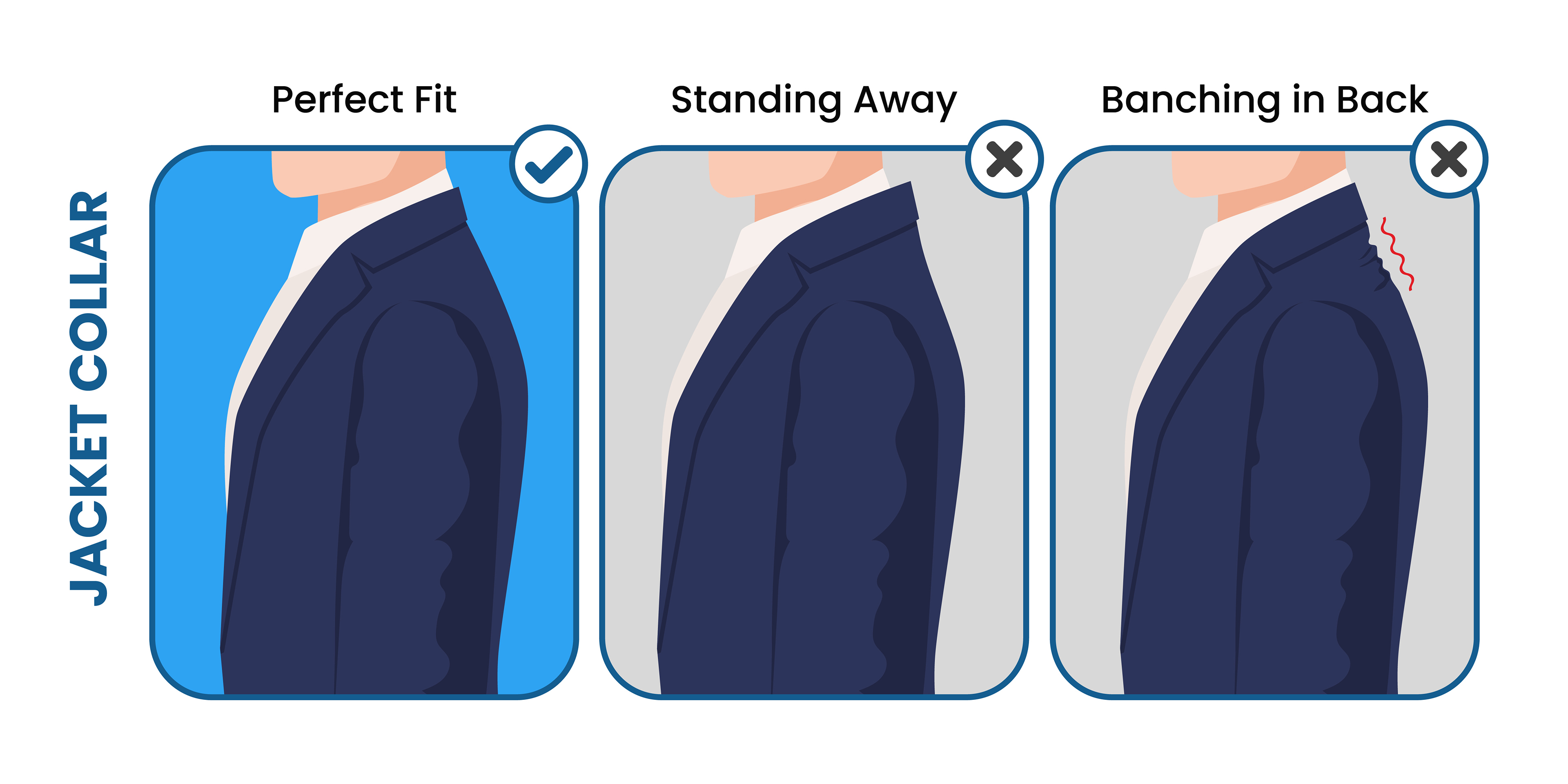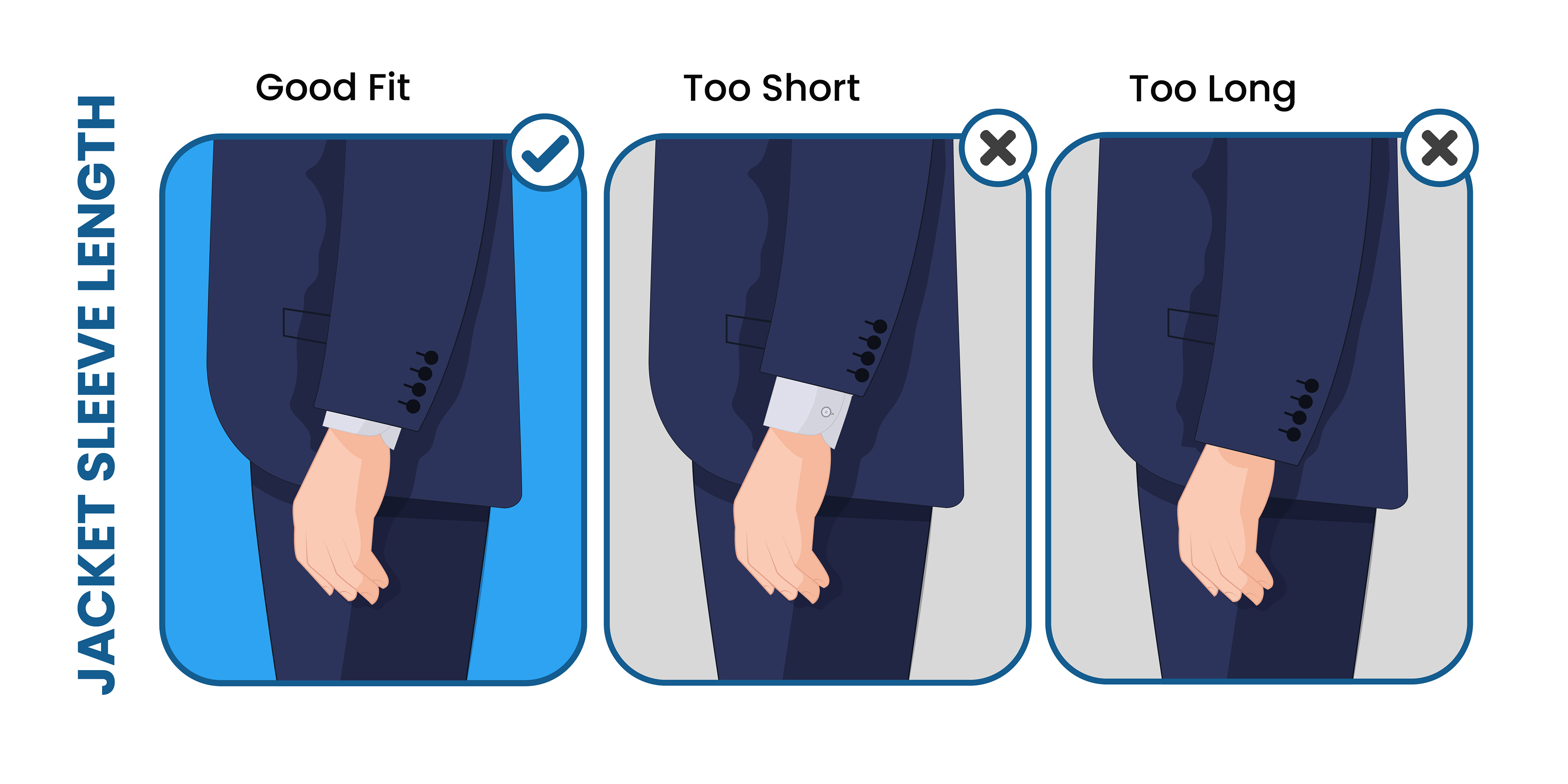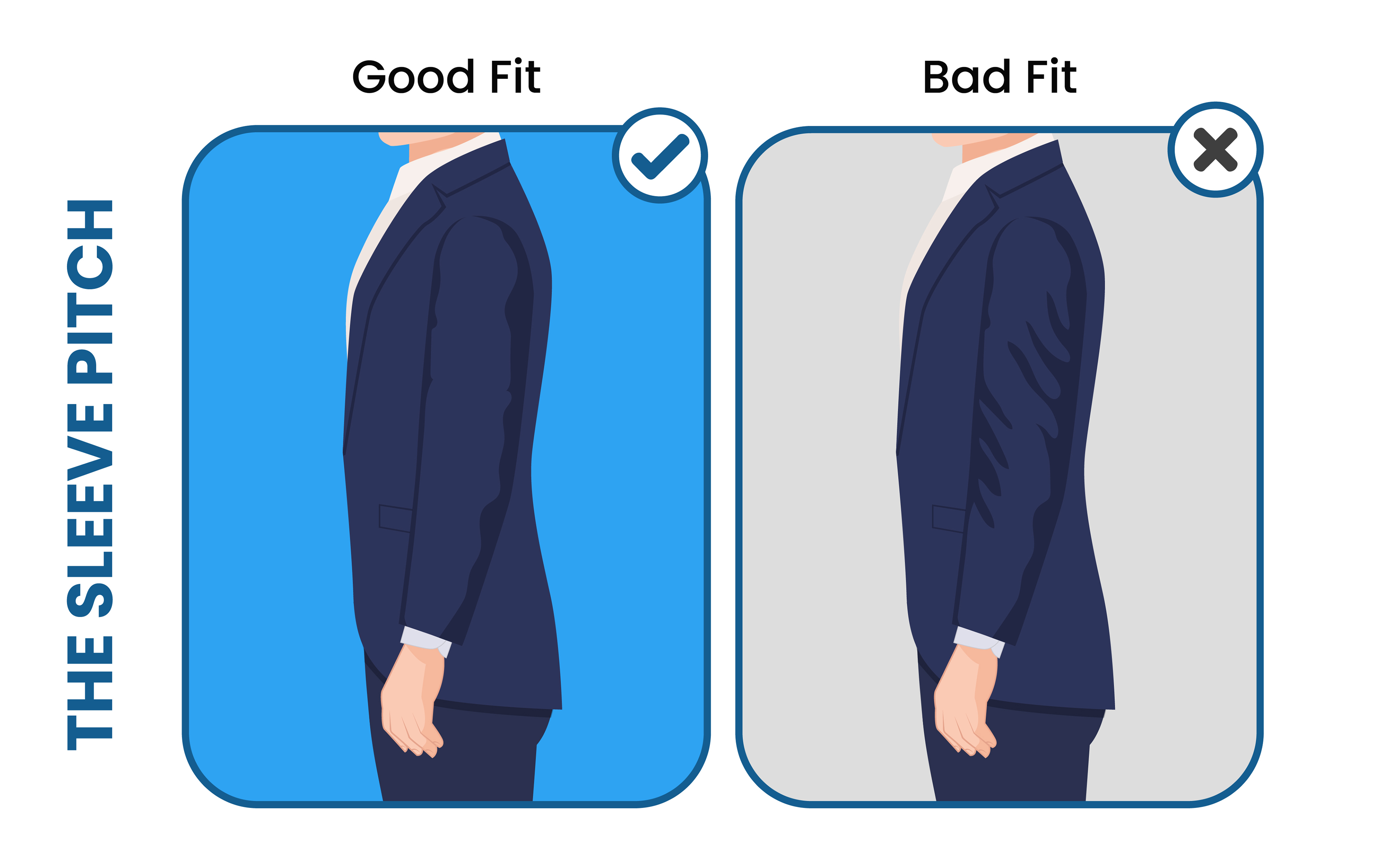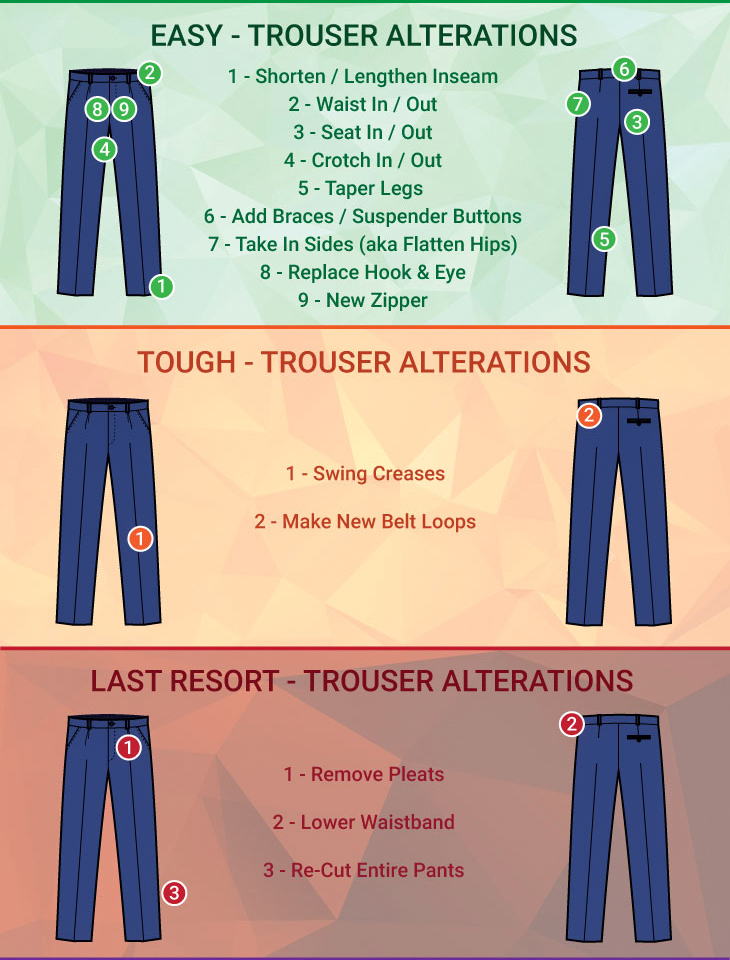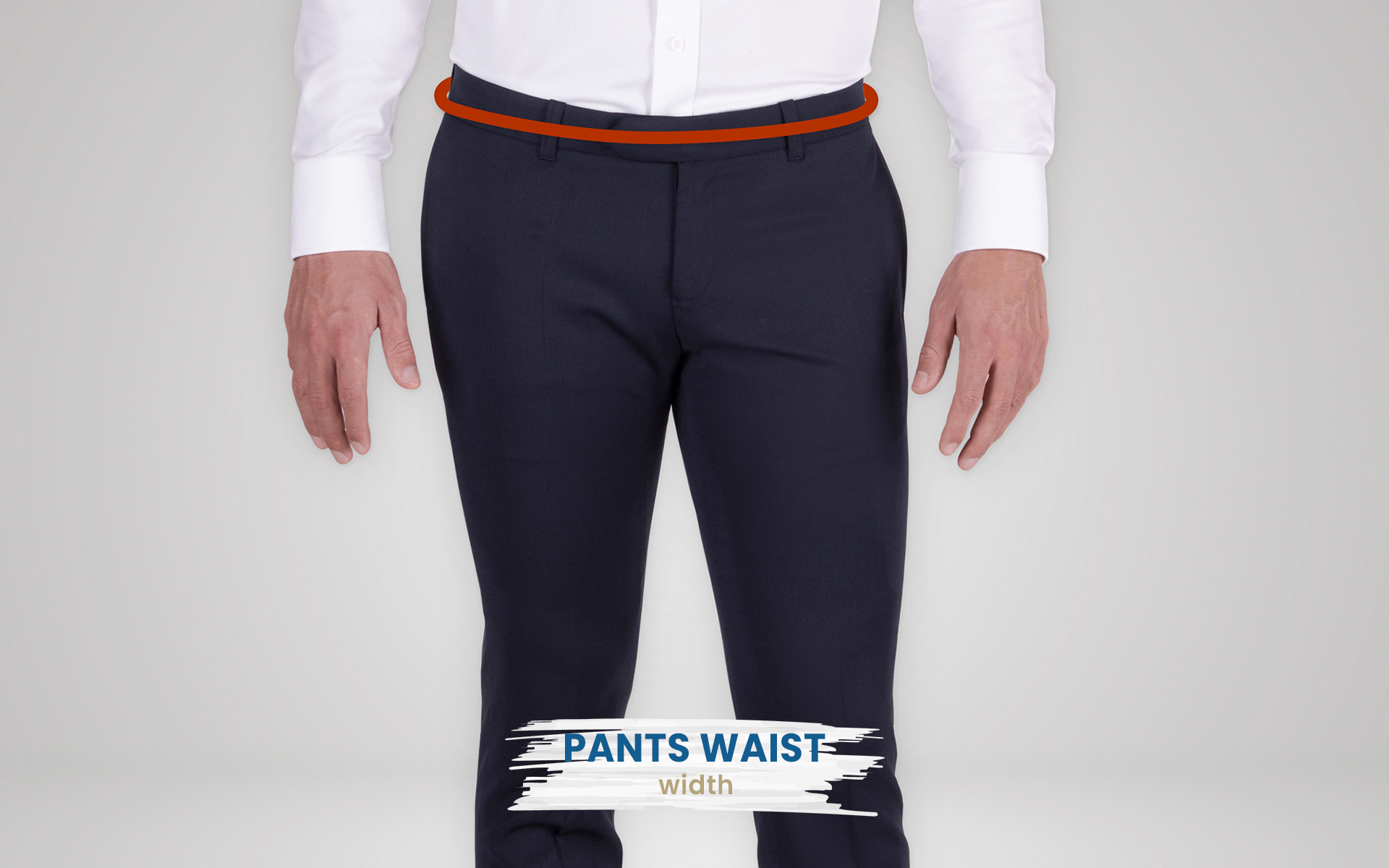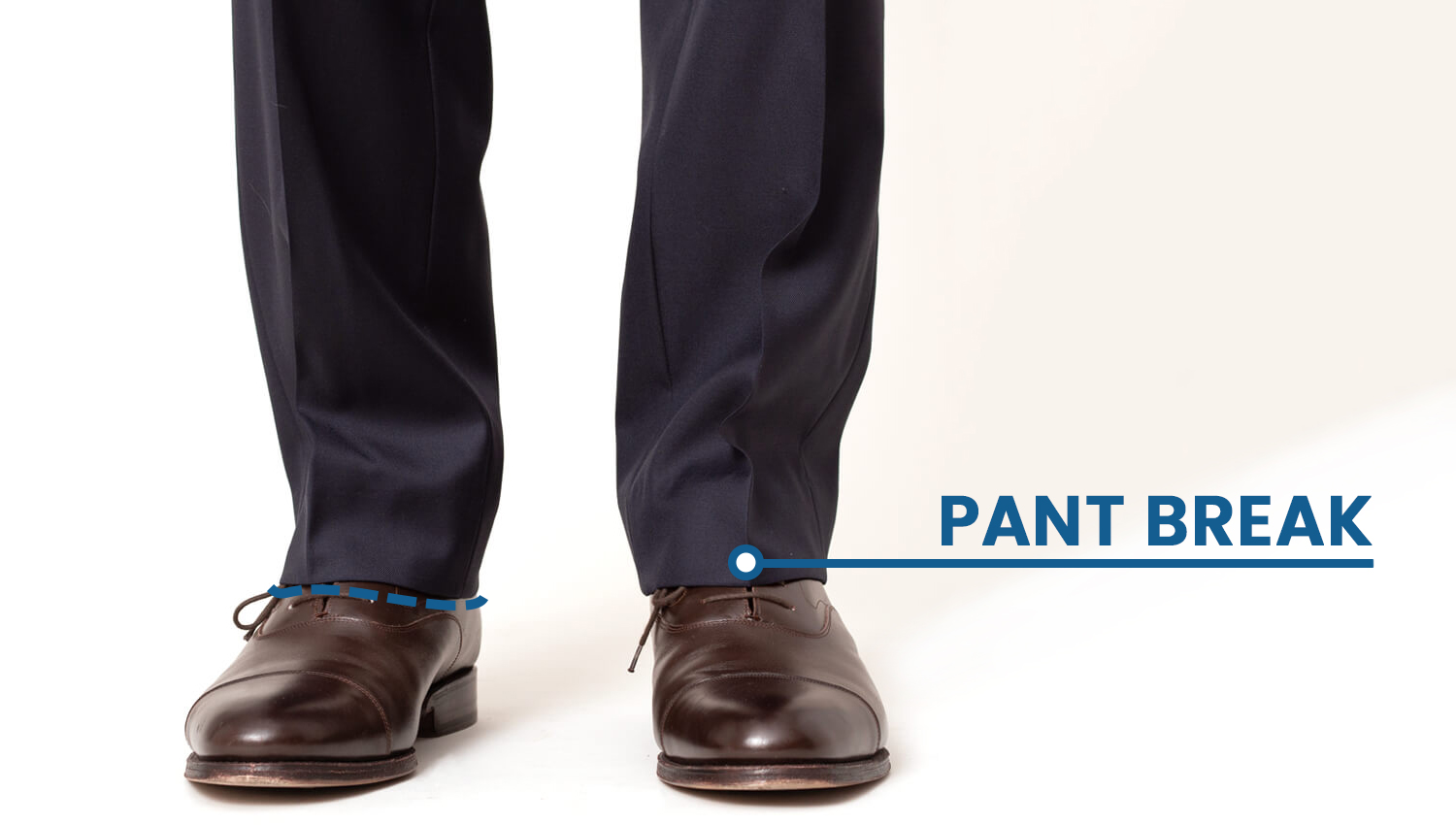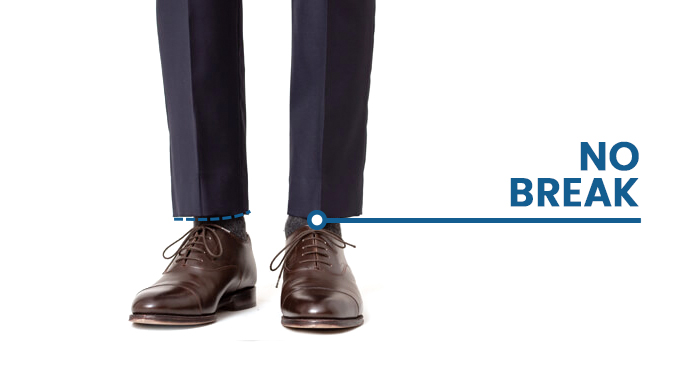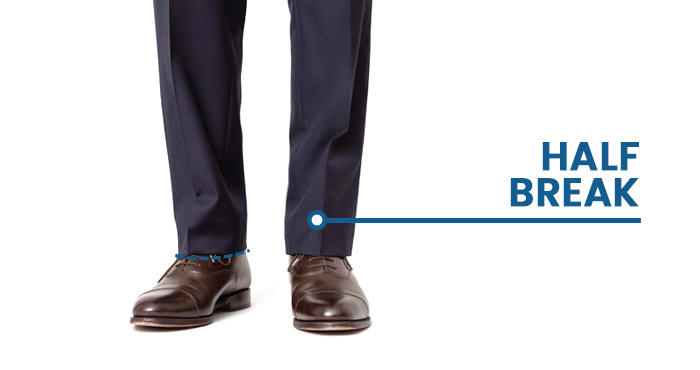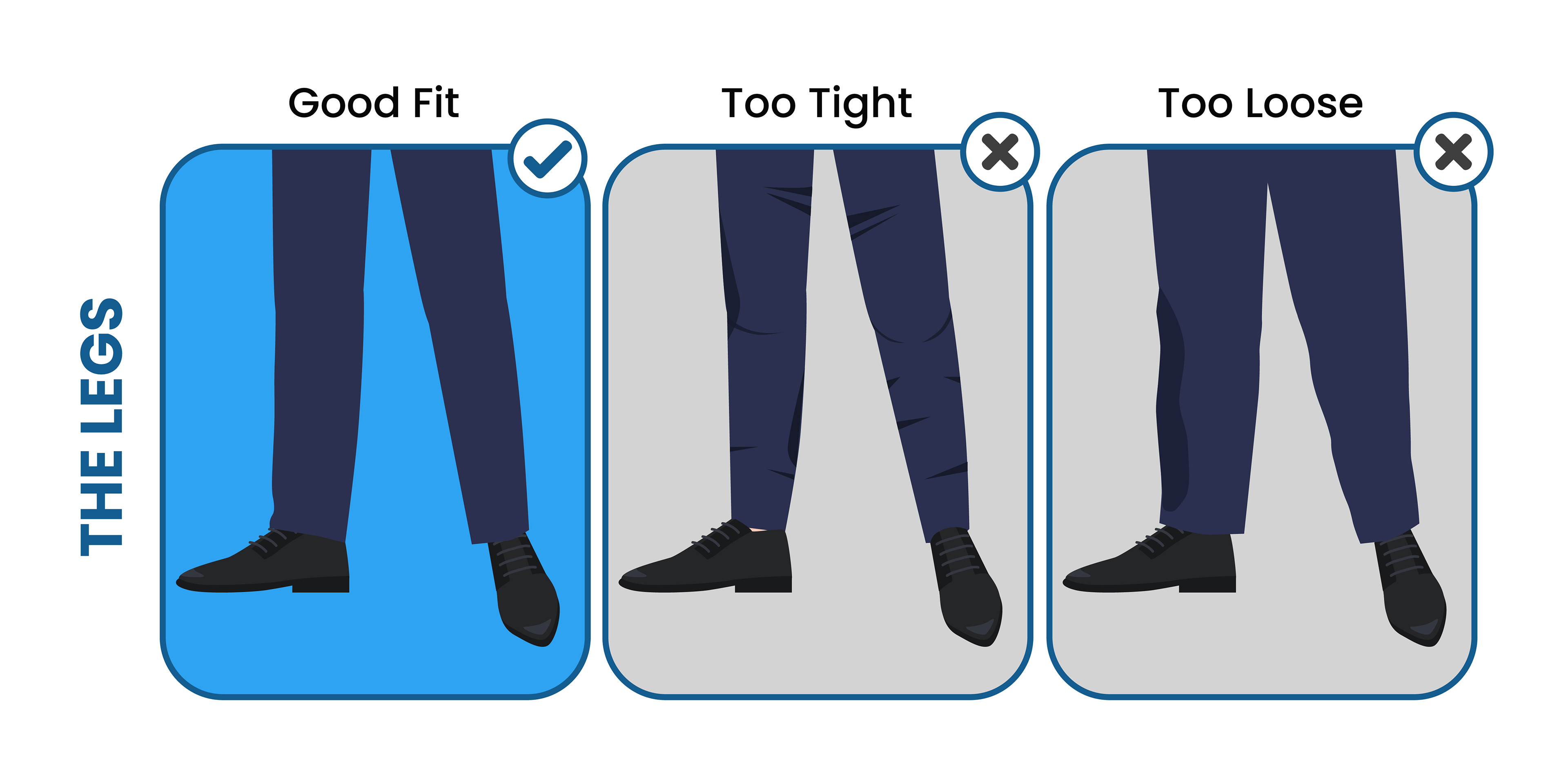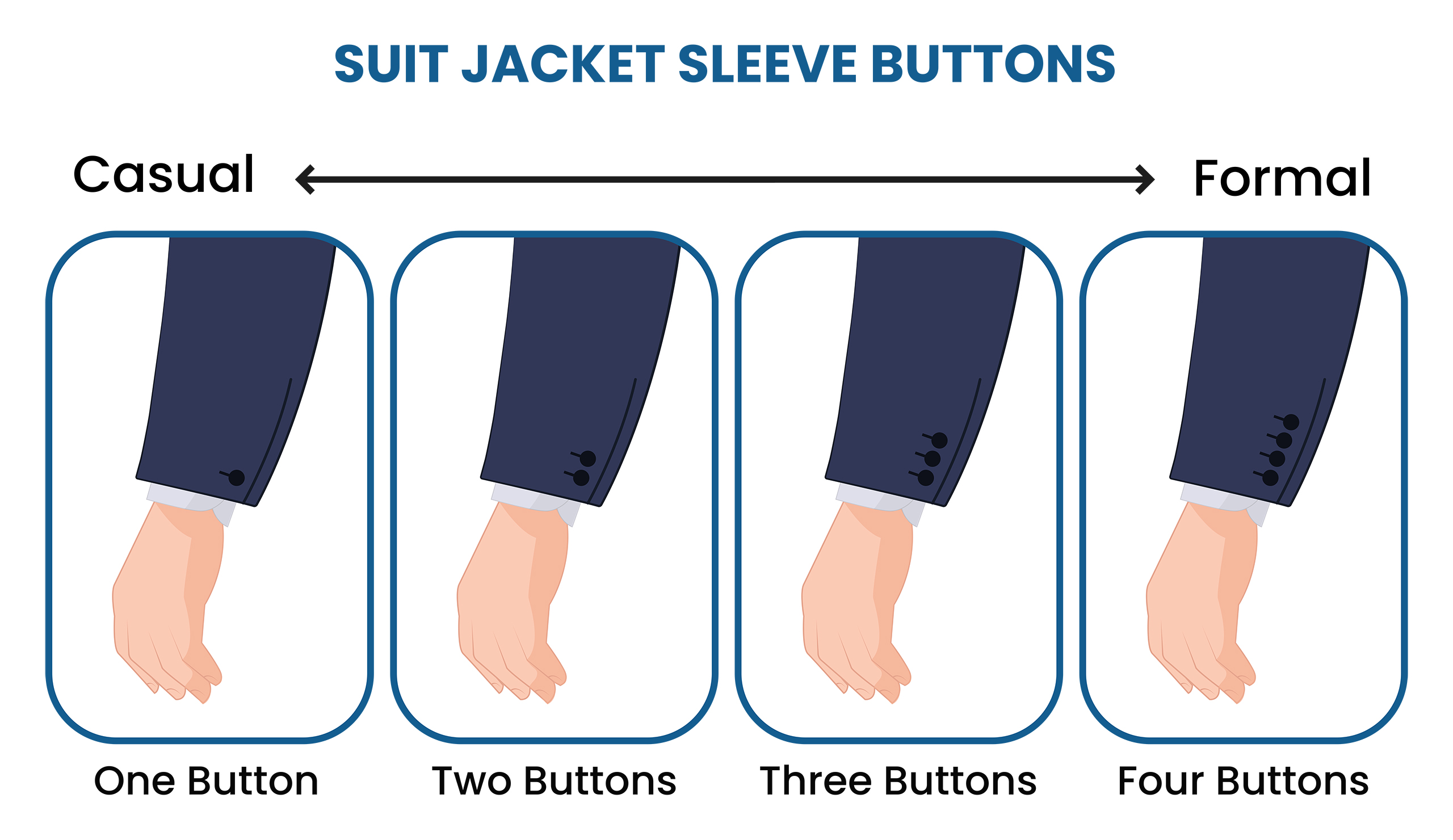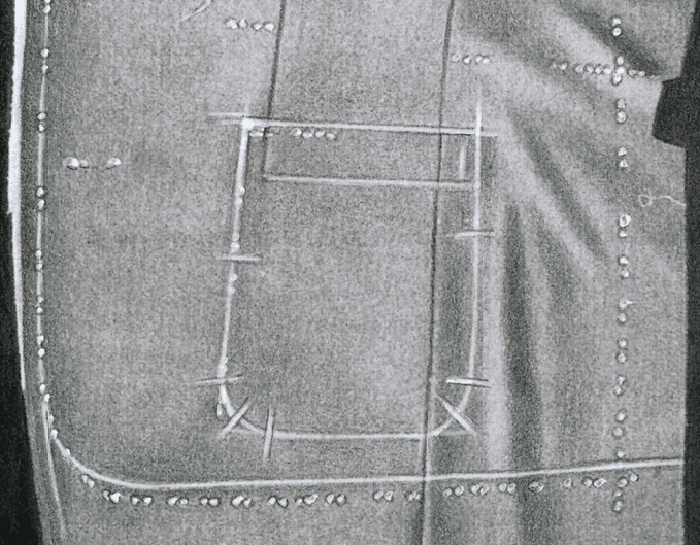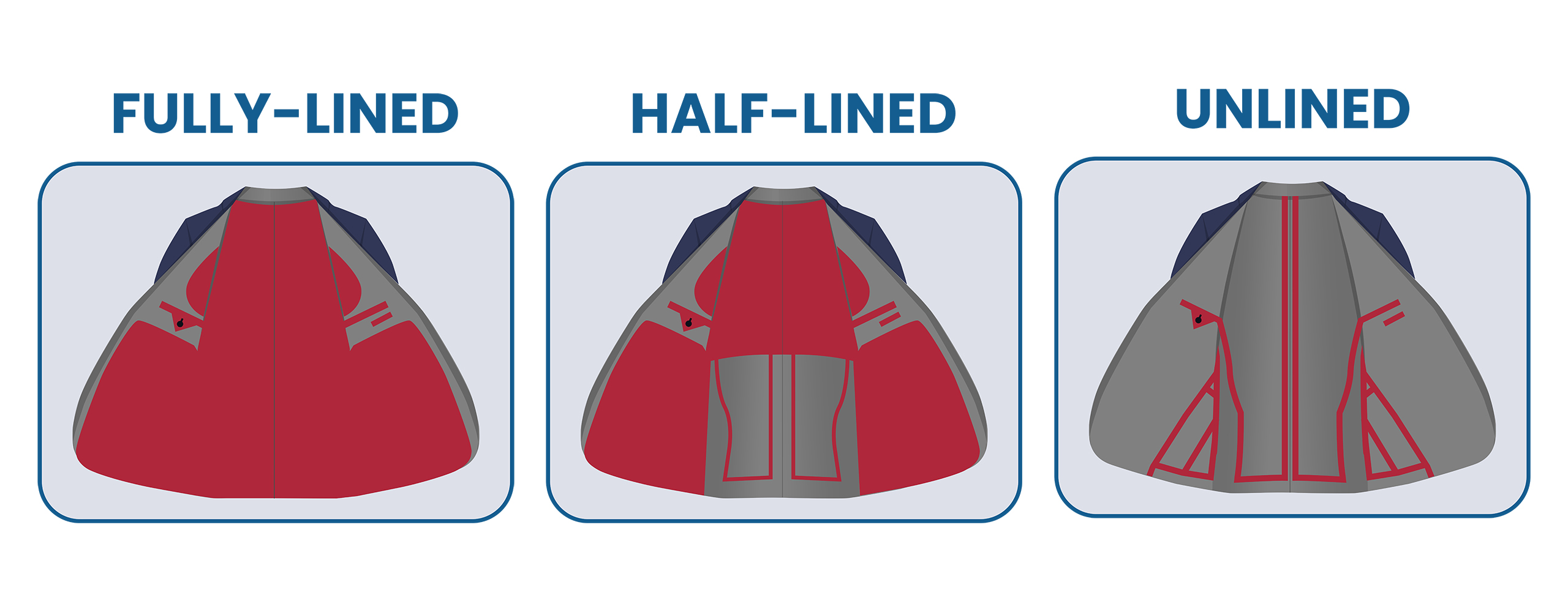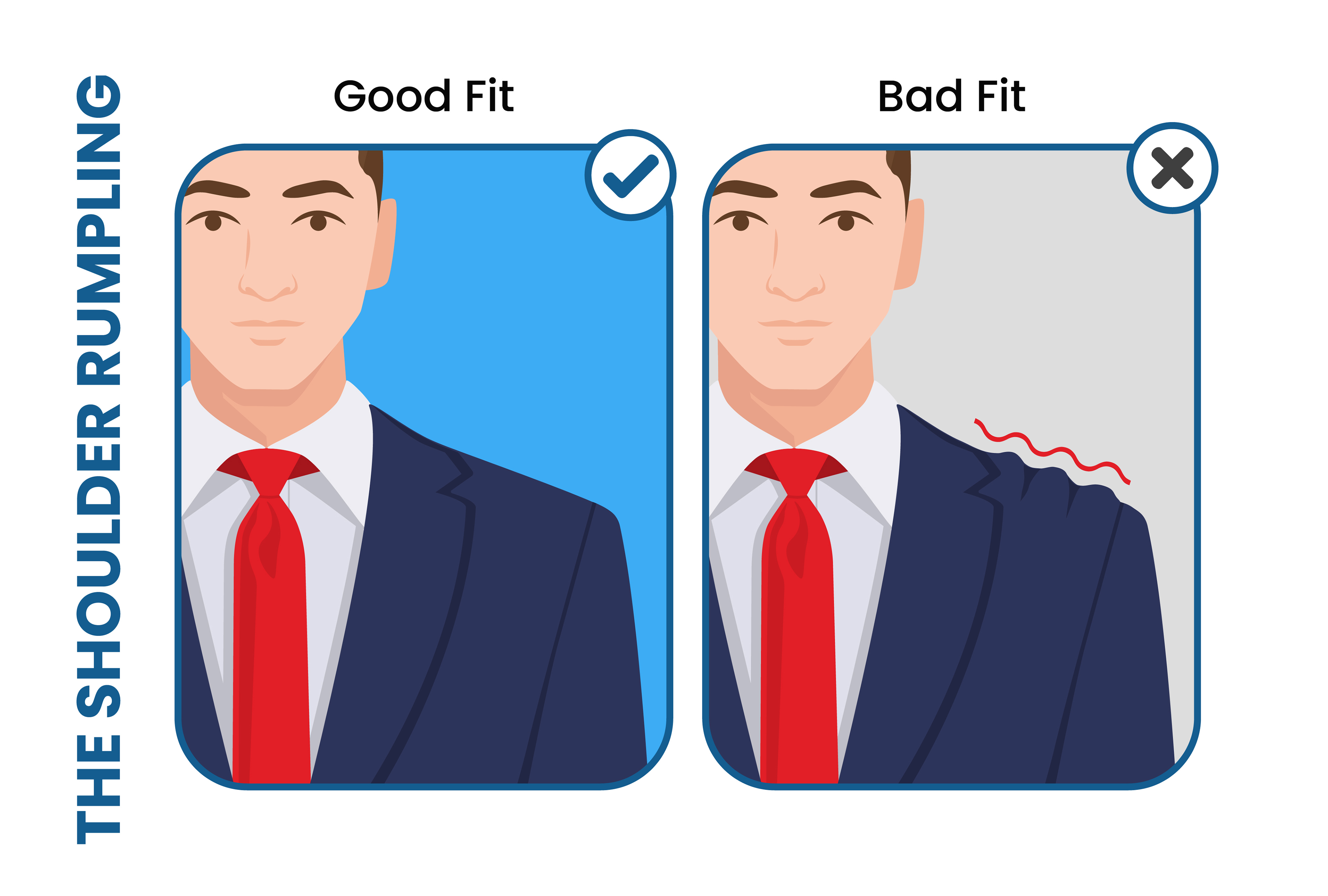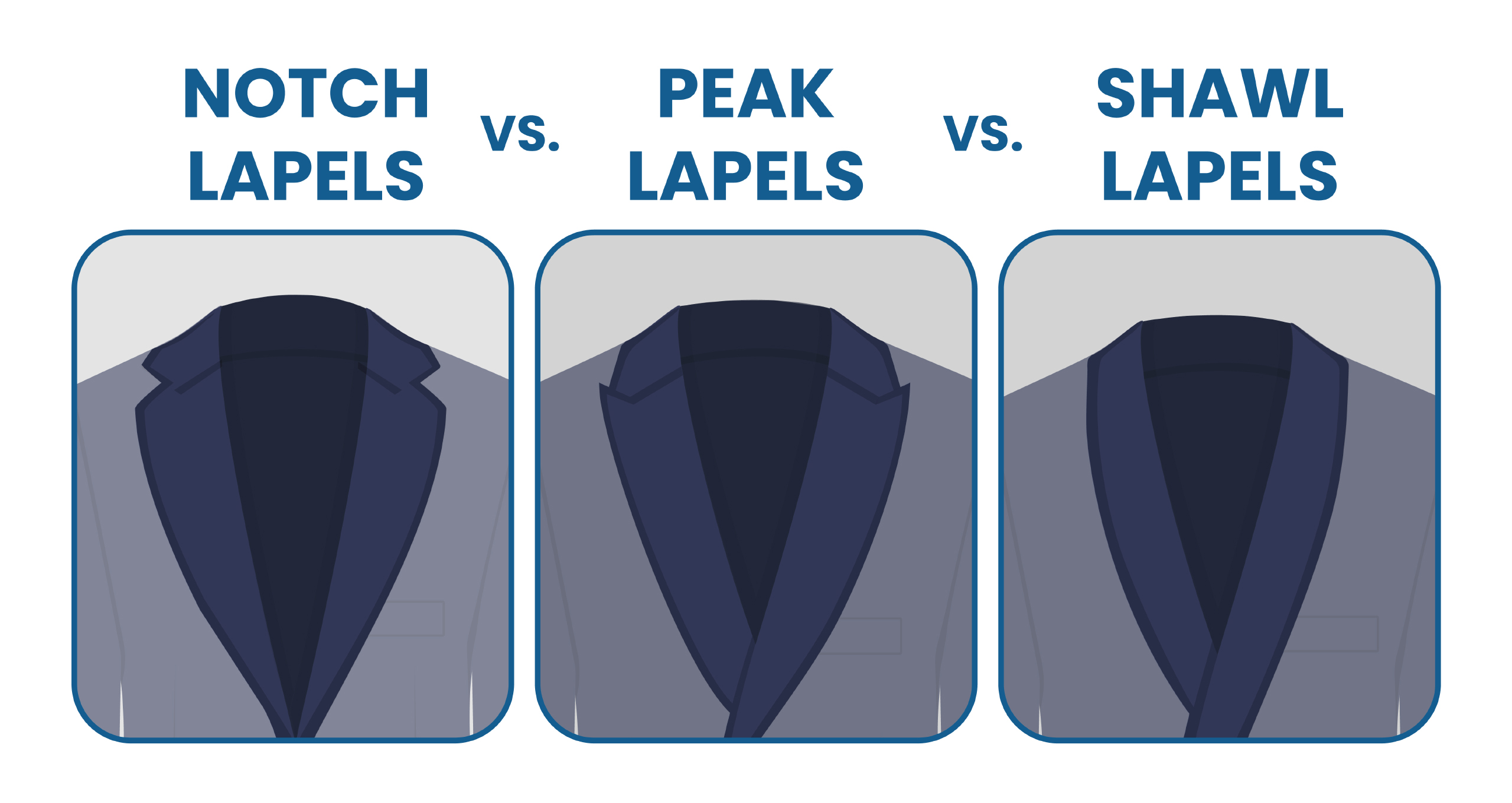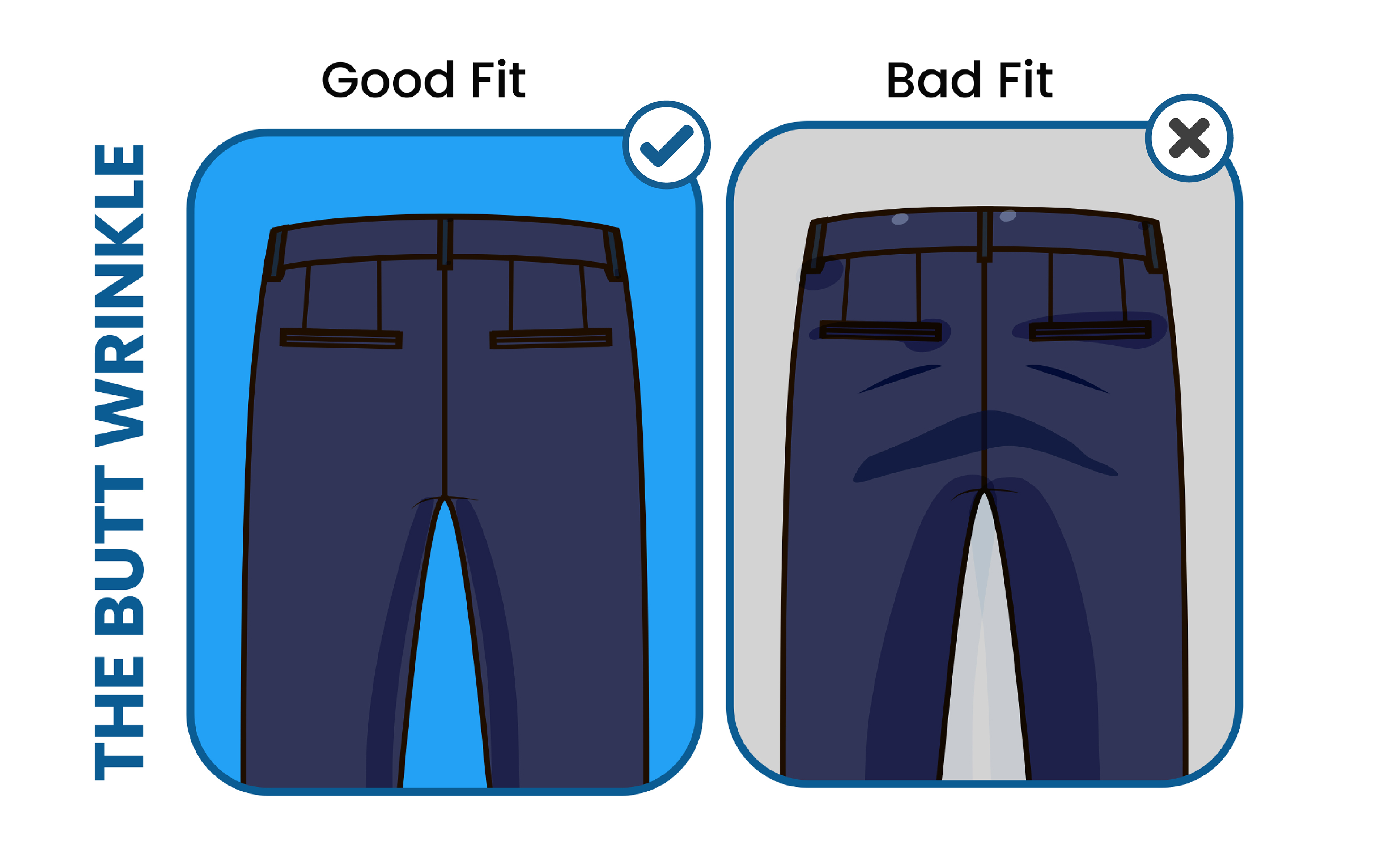Suppose you have a suit jacket that doesn’t fit quite right; press pause before getting rid of it. In most cases, you can make some alterations and wear your suit appropriately again.
A proper fit is always the main goal for any suit. No matter how nice your suit is, all else will fail if it’s a poor fit.
Fortunately, if you have a fantastic suit that’s slightly ill-fitting, you can have an experienced tailor make a few adjustments so that your suit is a perfect fit.
How Should the Suit Fit
You know that a perfect fit is the most critical part of any suit, but how do you know what to look for in a great fit?
Your suit jacket has many features you can judge to determine if it fits well or not. For example, when you are wearing your suit jacket, take a look at the shoulders.
The fabric should lie flat against the tops of your shoulders, with the seam ending precisely at the tips of your shoulders.
When you button your jacket, it needs to close snugly with no pulling or gapping of the fabric.
Check your lapel; it should also lie smoothly against your collarbone.
And what is the length of your suit jacket? If the sleeves end right at the top of your wrist and the jacket hem reaches just below your seat, it’s a perfect length.
Now examine the fit of your suit pants. When you take off your suit jacket, you should notice that the fabric smoothly drapes across your backside.
People should not see any sagging or tightness. To ensure that your dress pants are the correct length, look for a slight trouser break.
Common Suit Tailoring & Alteration Terms
Before you take your suit to a tailor, it’s essential that you both speak the same language. The language of alteration, that is.
Otherwise, you risk not seeing eye to eye with the man you’re entrusting your suit with and may end up with a far cry from what you intended for your suit.
If you are taking in your suit, you’re making your suit smaller, more narrow. This involves re-sewing the seams further into the garment.
Conversely, letting out makes the suit larger by unstitching the seams and re-sewing closer to the fabric’s edge.
How much you can let out your suit all depends on the fabric allowance. This is how much fabric in the seam would allow for a larger garment.
Unfortunately, fabric allowance varies from suit to suit. So you can’t usually estimate how much material is available until you unstitch the seams and start making suit alterations.
When the tailor is determining where he needs to cut and sew your suit, he will do some chalking and pinning.
He marks right on the suit with chalk to see the ultimate seam lines he will make, then uses tailor pins to temporarily hold the suit fabric where he will sew the new seams.
Different Suit Alteration Difficulties
There are three levels of suit alterations and difficulty in tailoring. First, you want to be sure you find a tailor who can handle every level of work you need.
Easy alterations are something that anybody with a needle and thread should be capable of handling. This is usually something as simple as adjusting a hemline.
Moderate suit alterations require a professional tailor, somebody who has trained for this position. These jobs are a little more advanced than the hem but don’t require a complete restructuring of a garment.
And finally, advanced suit alterations are only for the most experienced tailors. These tasks require a tailor who is an expert in the suit tailoring field.
Suit Jacket Alterations
Some suit jacket alterations are very challenging and may even be too risky to attempt; otherwise, you’ll end up with a destroyed jacket.
A suit jacket is like a completed jigsaw, and all the components are puzzle pieces.
An adjustment to one may throw all the other details off. When you make one adjustment, it affects the entire structure.
For example, the shoulders of a suit jacket are off-limits. It’s impossible to adjust those without throwing the entire suit out of whack.
As a result, a suit jacket is better suited to mostly minor tailoring adjustments. You shouldn’t expect a tailor to completely overhaul your jacket.
Shorten the Suit Jacket Length
It may seem like taking up the hem of your suit jacket to make it a bit shorter would be a straightforward task, but it’s relatively challenging.
Moreover, it’s a delicate task because it could leave your suit jacket appearing very unbalanced.
Raising the hemline of your jacket will affect your pocket placement and your buttons. Suddenly, those will appear to sit lower on your jacket, and you don’t want them too close to your bottom hem.
Pockets and buttonholes are not items that you can pick up and move further up the body of the jacket.
If you decide to shorten your suit jacket, it can only be raised by a minimal amount without looking comical. There is no fabric allowance to be able to lengthen your jacket.
Fitting the Jacket’s Waist
This is a moderately advanced tailoring job. Taking the waist in is more manageable than letting it out.
The tailor must first unstitch the panels on the jacket, removing the thread. Then he can sew them back together again deeper in on the material.
When the tailor is ready to take the waist in, confirm that he will not cut away the excess fabric. The tailor should always leave the fabric allowance in place, just if you need to let it back out again one day.
Letting the waist out is only possible when there is extra fabric in the seams. Rather than resorting right to unstitching the jacket to see if it can be let out, first try moving the buttons over a little bit.
This minor adjustment may be all that you need to fix a too-tight suit.
Reducing the Jacket Collar
Your collar can be made smaller by completely unstitching it first and removing it from your jacket.
The tailor then cuts it to the correct proportion needed for your suit and reattaches it to the body of the suit jacket.
While this is a manageable project, it’s honestly much easier and possibly cheaper to simply buy a new suit jacket.
If your collar is too large and is causing gapping along the neckline, there are likely other issues that will also require attention.
This could mean an entire jacket overhaul that probably isn’t worth the effort.
Reduce or Extend Jacket Sleeves
Adjusting the length of your jacket sleeves is a very straightforward and effortless adjustment. In fact, it’s likely the easiest suit jacket alteration you can make.
The only catch with this is how much you’ll be able to reduce the sleeve length if the jacket has buttons and buttonholes along the wrist.
Removing the buttons and moving them further up the sleeve is very easy if the buttons are not functional.
However, if the sleeve does have buttonholes, you don’t want to mess with those. It can lead to holes in your sleeve, so just leave them alone.
If the sleeve needs much shortening, the better way to approach this task is to have an expert tailor remove the sleeve from the jacket body and reduce it from the shoulder end.
This will take more skill and money but it avoids the mess with buttonholes.
Rotating the Jacket Sleeve
If you feel as though your jacket sleeve doesn’t sit at a proper angle on your arm, possibly due to poor posture or your build, you can have it rotated.
This suit alterations adjustment requires the work of an expert, as it’s not your standard alteration.
The tailor would need to remove the sleeve and work with it to replace it in a position that makes sense with your natural stance. It could also cause problems with functional buttons on the sleeve’s wrist.
Suit Pants Alterations
Several types of adjustments are possible for suit pants, but they do have their limits.
The most important thing that you need to be sure fits well when you buy a pair of pants is the crotch area.
If the crotch, or the rise of the pants, isn’t a good fit, then the pants can never be saved for you.
Adjusting the Pants Waist
Making the pants waist larger or smaller is one of the most common alterations needed for suits.
Manufacturers understand this, so they tend to be generous with providing extra fabric for letting pants out.
Some brands provide up to three inches of excess material, although most tailors advise only going out by an inch or an inch and a half.
Otherwise, the integrity of the entire structure of the pants is at risk.
If you are one of the lucky ones who need a smaller waistline, you may also take it in by about the same amount before the other components of the pants are affected poorly.
Hemming the Pants Length
If your suit pants don’t have cuffs, this is an extremely simple fix.
Depending on how much you are having the hemline taken up, you could even ask your tailor to craft cuffs out of the excess fabric for your pants if you would like them.
On the other hand, if your pants have cuffs and you aren’t a huge fan, your tailor could easily remove them.
If you decide to add cuffs, it’s helpful to factor your height into making the cuffs. It would be best if you kept the width of your cuffs proportional to your body.
For example, if you are under 5’10” tall, keep your cuffs to around an inch and a half so they don’t look overwhelming on your frame.
For taller men, you can go as wide as an inch and three-quarters.
Whichever style you choose, be sure to discuss the pant break with your tailor. Decide ahead of time how large you want your break and whether you have enough material to create the desired break.
Tapering the Pant Legs
This alteration will affect the circumference size of your pant leg. In addition, it will create a slimmer line along your lower half, which is flattering on nearly all body types.
If your pants are too wide for a flattering suit, this is a straightforward fix.
Creating some tapering in your suit pants requires unstitching the leg up to the knee. In some cases, it can even go as far as the pocket line.
Then, the tailor will restitch the leg, only further into the material away from the original seam.
Suit Repairs
Sometimes your suit doesn’t require work that will affect the fit. However, there are other tasks that you may need to ask your tailor to take care of for you in order to maintain your suit.
If you keep up these basic preservation needs, you can keep your suit in good shape for a long time.
Replacing the Buttons
If you’ve lost a button to your suit and don’t have a matching replacement, you may need to replace all the buttons to maintain your suit’s symmetry.
Or, sometimes, you may just want to upgrade the look of your suit jacket, and a fresh set of differently styled buttons will do the trick.
Either way, this is an incredibly simple task, and any tailor should be able to take care of that for you in a heartbeat.
Repair Pocket Lining
Pocket linings get torn all the time. A ripped lining won’t ruin the look of your suit, but it can be a massive pain in the neck.
So rather than just doing without that pocket, you can have a tailor quickly fix that.
It often involves restitching a torn seam, but sometimes it’s a bigger problem than a torn seam.
For example, if the entire lining has ripped away from the body of your suit, the tailor can replace it with some new fabric.
Removing the Jacket Lining
Getting rid of the lining of your suit jacket is a very difficult prospect, although it is possible.
It involves a considerable amount of work, seeing as the lining is in place to hide the mess of seams inside your suit jacket.
If you are removing it because you want to replace your jacket lining, bear in mind that it takes great skill to make a new interior.
Also, ensure that it matches up precisely with the measurements of your suit jacket.
Suit Alterations to Avoid
Sadly, some suit issues a tailor cannot fix. Therefore, it’s best to leave certain areas alone, or else you risk doing irreparable damage to the entire suit.
If you encounter one of these problems with one of your suits, you should probably consider retiring the suit and purchasing a new one.
Reducing Suit Jacket Shoulders
The shoulders create a delicate balance for the rest of the suit jacket. If you mess with their structure, it will affect the entire piece.
Some expert tailors will undertake this effort, but it is incredibly pricey and may not even work in the end.
It may even end up costing more than anticipated if the tailor needs to make other alterations based on how the new shoulders line up with the rest of the jacket.
In other words, the jacket’s shoulders can cause one big mess.
In reality, it’s easier and most likely less expensive to start fresh with a new suit jacket.
Changing Suit Jacket Lapels
In most cases of suit jacket lapels, there isn’t enough excess fabric to craft a new shape.
For example, peak lapels are longer than notch lapels, and you aren’t likely to find that extra material inside the seam of the collar.
Some very experienced tailors may be able to create a notch lapel out of a peak lapel, but it’s going to be a very narrow seam, so my suggestion is that it’s safer to leave the lapels alone.
Recutting the Pants
If your suit pants are so far off that the seat doesn’t fit you well and needs recutting, you just need to ditch those pants.
A tailor isn’t able to do much with the seat of pants without completely unstitching the entire pants and recutting the pair as a whole.
Take the money that you would spend on that tailoring effort and invest it in a custom-made pair of suit pants for yourself.
They will turn out far better and cost roughly the same amount.
Hi, I’m Alex, and I’ve studied and specialized in styling in Rome. Through my writing, I want to help men dress well and learn the purpose and significance of suits and other formal attire. My final goal is to make men more confident in their wardrobe choice and life in general.

